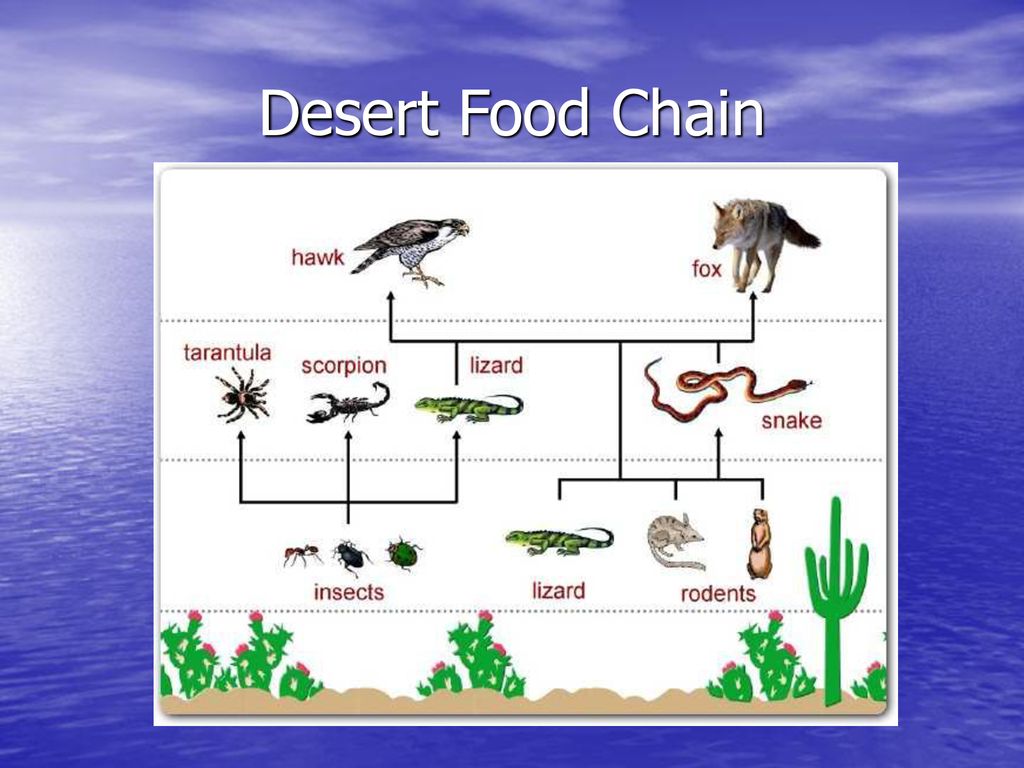Multicolor Food Chain in Desert Ecosystem For General Science Chart Biology Diagrams This is a Sonoran Desert Food Web.See if you can identify all the parts of the food web that make this a functioning, healthy ecosystem. Look for: The Producers - the cacti, shrubs and plants.. The Primary Consumers - the kangaroo rat, cactus mouse, lizards, poorwill, and desert tortoise.. The Secondary Consumers - the kit fox, elf owl, redtailed hawk, scorpion, roadrunner, and rattlesnake.

Grazing Food Chain: Energy flow starts with green plants, which are consumed by herbivores, followed by carnivores. Common in terrestrial ecosystems. Detritus Food Chain: Energy flow begins with dead organic matter broken down by decomposers, then consumed by detritivores. Common in decomposition processes. Parasitic Food Chain

Science project - Education.com Biology Diagrams
This Desert Food Chain Printable is filled with homeschool cut-and-paste activities, web diagrams, and matching games to teach kids about the desert ecosystem. Desert Food Web Diagram. This visual shows the desert food web. It helps kids understand the complex relationships between species. All species depend on each other to survive.
A desert food chain is a diagram showing the transfer of energy through an ecosystem in the desert. Food chains show the transfer of energy through an ecosystem in a linear fashion, in the form of

Desert Food Chain Biology Diagrams
Learn how plants and animals adapt to survive and thrive in the desert ecosystem. Explore the trophic levels of the food chain, from producers to apex predators, with examples and diagrams.

Learn how food webs illustrate the feeding relationships and energy flow among species in an ecosystem. See examples of food webs in a desert and a rocky intertidal zone, and how they vary in complexity and influence. Desert: Cactus -> Desert Mouse -> Rattlesnake -> Coyote: Conclusion. A food chain diagram is a visual representation that illustrates how energy and nutrients flow through different levels of an ecosystem. It typically starts with primary producers, such as plants, and moves up through various levels of consumers, which include herbivores Learn how energy flows through the complex network of organisms in the Southwestern desert region, from plants to animals to decomposers. Compare the desert food chain with the tropical rainforest food chain and explore the factors that affect biological productivity and diversity.
